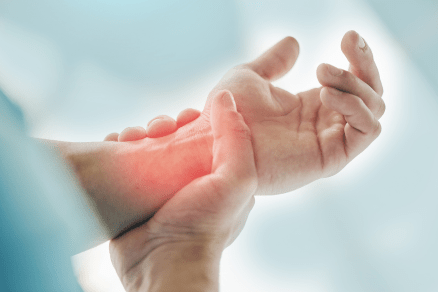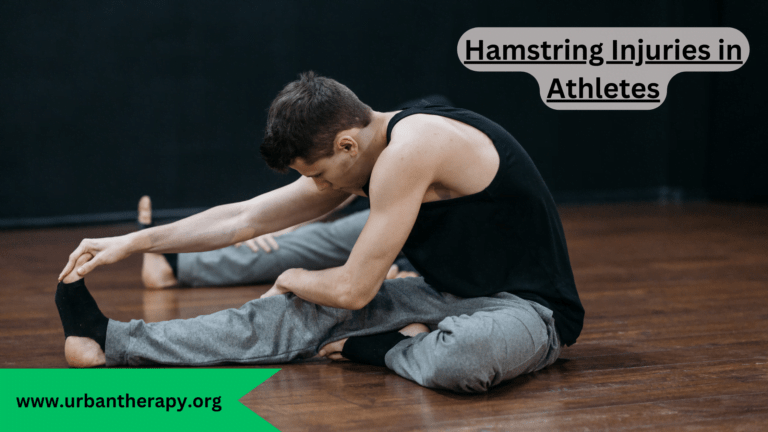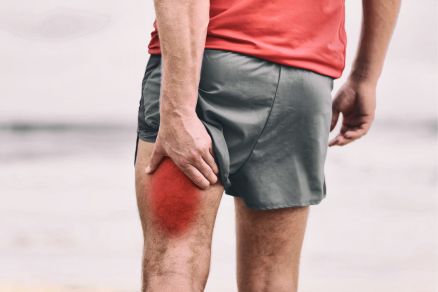Osteoarthritis (OA) is the most common form of arthritis, affecting over 30 million adults in the United States. As a progressive degenerative joint disease, OA breaks down the cartilage, soft tissue, and bone of affected joints over time, leading to pain, stiffness, swelling, and decreased range of motion.
While there is no cure for OA, effective management strategies can improve quality of life and mobility.
What is Osteoarthritis?
Osteoarthritis, also known as degenerative joint disease or degenerative arthritis, is a progressive condition that damages the tissues within joint capsules, including articular cartilage, underlying bone, synovial fluid, ligaments, and muscles surrounding the joints.
The breakdown of cartilage is a hallmark of OA or, Osteoarthritis. This firm, slippery tissue covers the ends of bones where they meet to form body joints, providing cushioning and smooth motion. When cartilage erodes in OA, bones rub directly against each other, causing pain, inflammation, stiffness, and loss of flexibility.
It can occur in any joint, but most often affects:
- Hands – base of thumb and finger joints
- Knees
- Hips
- Spine – neck and lower back
- Feet – big toe and midfoot
It develops slowly, usually over years, though joint injury or mechanical stress can accelerate the process. Early stages may be asymptomatic before progressing to cause joint symptoms interfering with daily activities. Currently, there is no cure for osteoarthritis, but various treatments can effectively manage symptoms and improve quality of life.
OA involves whole joint structures beyond just cartilage breakdown. Other joint components affected include:
- Synovium – Membrane lining the joint capsules that secrete synovial fluid to lubricate joint movement. Inflammation of the synovium (synovitis) occurs with OA.
- Bone – Loss of cartilage exposes underlying bone ends, leading to damage and growth of bony projections called bone spurs or osteophytes. Cysts can also form within the bone.
- Ligaments & Tendons – Thicken and become stiff from compensating for joint instability. Weaken over time.
- Muscles – Weaken from disuse due to pain avoidance. Experience spasms and impaired function.
- Meniscus – Cushioning discs between the knee bones degrade, tear, and shrink.
- Nerves – Become pinched or impinged as other structures enlarge, resulting in pain.
This condition affects the entire joint complex, progressively altering joint integrity and biomechanics. Understanding this complex, multi-tissue process informs OA management.
Osteoarthritis Prevalence
Osteoarthritis is an extremely common health condition. According to the Arthritis Foundation and Centers for Disease Control (CDC), OA affects:
- 32.5 million adults in the United States
- 1 in 4 adults over age 65 in the US
- More women than men
- Usually occurs after age 40
- Leading cause of disability in older adults
Prevalence is rising due in part to aging populations, increasing obesity rates, and higher rates of sports injuries and joint trauma. OA poses a growing public health concern that demands effective prevention and treatment approaches.
OA Pathogenesis: Disease Progression
Osteoarthritis development is complex, involving multiple factors that are still not fully understood. While no single cause triggers OA, current research points to several disease pathways:
Mechanical Stress
Excessive joint use and injury can initiate cartilage damage. Specific mechanisms include:
- Repeated impaction – e.g. jogging. Force transmits through joints with each step.
- Abrasion – e.g. knee scraping. Removes cartilage surface.
- Torsional forces – e.g. twisting knees. Stresses joint tissues.
- Tensile strain – e.g. overstretching ligaments. Alters cartilage composition.
- Shear stress – e.g. slipping on ice. Disrupts cartilage integrity.
- Compressive overload – e.g. obesity. Exceeds weight-bearing capacity.
Mechanical stress is considered the primary driver of OA by directly damaging joint structures. It helps explain why OA often affects weight-bearing joints and begins with joint injury.
Biochemical Factors
Cartilage degradation involves complex biochemical processes at the cellular and molecular levels. Imbalances between destructive and reparative pathways contribute to OA progression:
- Inflammatory cytokines – Pro-inflammatory signaling molecules promote cartilage breakdown.
- Enzyme expression – Matrix metalloproteinases (MMPs) destroy collagen and aggrecan.
- Apoptosis – Increased chondrocyte death disrupts cartilage maintenance.
- Reduced synthesis – Less production of collagen, proteoglycans depletes cartilage.
Imbalanced biochemical factors prevent cartilage upkeep and facilitate degeneration. They represent therapeutic targets for disease-modifying OA drugs currently under research.
Genetics
Gene variations linked to OA development include:
- COL2A1 – Mutation causes defective collagen.
- FGFR3 – Causes abnormal skeletal growth.
- FILIP1/WISP3 – Role in maintaining cartilage.
- GDF5 – Involved in joint formation.
- DIO2 – Related to bone mineral density.
Genes involved in joint architecture and skeletal growth may predispose to OA by altering joint stability and mechanics early in life. OA has a heritable component, so family history raises risk.
Aging
OA prevalence escalates with aging due to lifetime mechanical stress, reduced growth factor joint maintenance, cell senescence, oxidative damage accumulation, and other mechanisms. Cartilage loses its regenerative capacity with age.
Metabolic Disorders
Conditions like diabetes and thyroid dysfunction disturb cartilage homeostasis and joint health by mechanisms still under study. Obesity is a major, modifiable OA risk factor.
No single pathway initiates OA alone. Current research recognizes OA as a disease of the whole joint organ, with interconnected biochemical, metabolic, and biomechanical derangements driving progressive dysfunction.
OA Symptoms
Joint pain is the primary symptom that drives patients with OA to seek evaluation. Location, character, timing, and aggravating factors of OA pain include:
- Deep, aching joint pain, is often called mechanical pain.
- Worst with weight-bearing and movement, especially after overuse or inactivity.
- Improves significantly with rest.
- Morning stiffness lasting less than 30 minutes upon awakening or after inactivity during the day.
- Pain ascending or descending stairs. Difficulty rising from a seated position.
- Night pain disrupts sleep.
- Crepitus – Cracking, grinding, crunching, or popping noises with joint motion.
- Joint instability, buckling, or giving way.
Along with pain, affected joints exhibit:
- Decreased range of motion and stiffness.
- Joint swelling, fluid accumulation, palpable warmth.
- Joint tenderness directly over affected areas.
- Muscle spasms and weakness around the joint.
- Bony enlargement, deformity in severe OA.
Symptoms are often intermittent and weather-sensitive initially, becoming more persistent as OA progresses. Pain does not correlate with x-ray severity since pain perception is highly individualized. Many people develop minimal pain despite advanced OA on imaging.
OA Diagnosis
Since OA symptoms can mimic other types of arthritis, doctors diagnose OA based on clinical evaluation plus a combination of imaging and lab tests.
Medical History
Patterns of joint involvement, pain qualities, relieving/aggravating factors, family history and risk factors help distinguish OA from other arthritic conditions. Prior joint injury and repetitive impacts are key parts of history.
Physical Exam
Findings indicating OA include:
- Reduced range of motion, deformity
- Joint swelling, fluid, warmth, crepitus
- Tenderness over-involved joints
- Muscle atrophy around the joint
- Gait abnormalities – limping, altered mechanics
- Bony enlargement, palpable osteophytes
Imaging
- X-rays – Gold standard for visualizing OA changes including narrowing joint space, osteophytes, and subchondral sclerosis. Severity grades 0-4 based on joint space width.
- MRI – Assesses soft tissue and cartilage damage unseen on X-rays.
- CT scan – Further evaluates bone changes.
- Ultrasound – Shows osteophytes, and synovitis. Radiation-free.
Lab Tests
- Complete blood count, ESR, CRP – Assess systemic inflammation.
- Synovial fluid analysis – Cell count, crystals.
- Rheumatoid factor, ANA – Rule out inflammatory arthritis.
Imaging and lab findings must correlate with clinical presentation to confirm OA. Multiple joints are usually affected as OA is a systemic condition.
OA Treatment Overview
Currently, no cure exists for OA. Management aims to relieve symptoms, improve joint function, slow progression, and enhance quality of life. Optimal outcomes use individualized, multimodal strategies:
- Weight management to reduce mechanical stress on joints
- Exercise for muscle strength, joint stability, and pain relief
- Physical therapy for function, activity modification, devices
- Assistive equipment – canes, walkers, raised toilet seats
- Oral medications for pain and inflammation
- Topical analgesics applied to affected joints
- Joint injections for temporary symptom relief
- Complementary therapies like massage, acupuncture
- Surgery for joint repair or replacement in severe OA
Treatment focuses on the hips and knees first since these large, weight-bearing joints greatly impact mobility. A team approach works best, combining medical care with rehabilitation therapies and self-management education.
Non-surgical treatments should be tried first before considering surgery. Not all treatments benefit every patient; maintaining a tailored, flexible approach produces the best results. Patients must play an active role through lifestyle changes and daily self-care.
OA Management: Lifestyle Approaches
Evidence strongly supports lifestyle approaches as core, effective therapies for managing OA:
Weight Loss
Carrying excess body weight strains joints by increasing mechanical compression and shear forces during movement and loading. Just a 10 lb weight loss can significantly reduce knee OA pain by lowering joint stress by 13-18%.
Exercise
Joint-strengthening and low-impact aerobic exercise reduces OA symptoms and improves mobility without worsening joint damage. A tailored program prevents muscle atrophy and inflexibility that can accelerate OA progression.
Activity Modification
Adjusting movements and daily tasks reduces repetitive joint strain. This can involve altering techniques, using assistive devices, changing footwear, and pacing activities with rest.
Dietary Strategies
Anti-inflammatory diets high in Omega-3s from fish, nuts, oils, and certain produce may benefit OA. Lose weight if needed; maintain healthy nutrition.
Stress Management
Chronic stress and low mood worsen pain perception. Relaxation practices, social support, therapy, and anti-depressants if warranted can improve mental health.
Patients should adopt lifestyle changes early on for the best long-term outcomes. Even modest increases in activity and fitness deliver tangible improvements in OA symptoms and mobility.
Osteoarthritis or OA Medical Management
There are various medical management for osteoarthritis:
Analgesics
Oral and topical medications provide pharmacological pain relief:
- Acetaminophen – Mild analgesic and antipyretic. First-line oral option.
- NSAIDs – Stronger anti-inflammatory effects but may cause GI, kidney, and cardiovascular side effects, especially with long-term use.
- Topical NSAIDs – Applied directly on joints to penetrate locally. Avoid systemic effects.
- Tramadol – Weak opioid with added serotonin action.
- Duloxetine – SNRI antidepressant that modulates nerve pain signals.
Narcotic opioids are avoided due to risks and lack of proven benefit for chronic OA pain. Pain medications should be used at the lowest effective dose with periodic reassessment of need.
Corticosteroid Injections
Intraarticular steroid injections can temporarily reduce inflammation and pain in severely affected joints. However, frequent repeated injections may accelerate joint damage. Usually, no more than 3-4 injections per year per joint are recommended.
Viscosupplementation
Injections of hyaluronic preparations aim to replenish synovial fluid lost in OA. Evidence of benefit is weak for knee OA and lacking for other joints. Probably not cost-effective for most patients.
Disease-Modifying Osteoarthritis Drugs (DMOADs)
An exciting area of pharmaceutical research, DMOADs show promise to slow OA progression not just mask symptoms. Currently, no such drugs are approved for OA, but candidates targeting inflammatory mediators, catabolic enzymes, and anabolic pathways are in development.
For knee OA, consult the American College of Rheumatology guidelines and the Appropriate Use Criteria for optimizing non-operative therapies. Work closely with your rheumatologist to create an individualized, stepped-care pharmacologic plan.
Rehabilitative Therapies
Physical therapy, occupational therapy, athletic training, and other rehabilitation practitioners have expertise in delivering interventions that improve OA symptoms, joint mobility, strength, balance, and functional abilities:
- Therapeutic exercise – Aerobic, strengthening, flexibility, neuromuscular training.
- Manual therapy – Stretching, joint mobilization, soft tissue massage.
- Modalities – Heat, ice, ultrasound, TENS for pain relief.
- Orthotics and assistive equipment.
- Patient education on joint protection and proper body mechanics.
- Balance and fall prevention.
Supervised rehabilitation programs show significant reductions in pain and disability, allowing people to better perform daily activities. A customized exercise routine is crucial for managing OA long-term.
Alternative and Complementary Therapies
Many patients try alternative approaches:
- Acupuncture – Fine needle insertion shown to temporarily relieve OA pain. Effects limited but low risk.
- Massage – This may provide short-term pain relief when performed by a skilled therapist.
- Yoga, tai chi, qi gong – Gentle practices improve flexibility, balance, and meditative pain coping. Select beginner-level classes.
- Heat and cold therapy – Self-applied heating pads, cold packs, paraffin wax, and contrast baths can be helpful.
- Nutritional supplements – The benefits of glucosamine/chondroitin and curcumin remain questionable based on existing studies. Omega-3 fish oil has anti-inflammatory effects.
- Cannabidiol (CBD) products – Growing research on CBD extract for OA pain relief and improved sleep quality.
Alternative options should not replace standard medical care but may provide adjunctive supportive benefits on pain and functioning for some OA patients.
Surgery for Severe Osteoarthritis
For end-stage OA unresponsive to other measures, surgical interventions can reduce pain and restore joint function and quality of life. Common OA surgeries include:
- Osteotomy – Bones cut and realigned to redistribute weight-bearing forces away from damaged cartilage.
- Arthroscopic debridement – Remove loose fragments and smooth rough cartilage areas. Temporarily delays knee replacement.
- Total joint replacement – Severely damaged hip or knee entirely reconstructed with prosthetic joint implants. Over 1 million are performed annually in the US.
- Arthrodesis – Fuse bones to eliminate painful motion between two joints.
- Partial joint replacement – Resurface portions of the damaged joint, preserving some soft tissues and bone.
Rehabilitation after surgery is crucial for regaining strength and mobility. Post-operative pain management also improves outcomes. An experienced orthopedic surgeon can determine if and when surgery becomes appropriate for advanced OA.
Self-Care and Living with Osteoarthritis
While OA treatment relies on medical, movement, and surgical therapies, daily self-care strategies enable patients to take an active role in managing their condition:
- Gentle range of motion exercises are done regularly to maintain joint flexibility. Important before and after activity.
- Applying heat or cold locally to joints for pain relief.
- Massaging arthritic joints to reduce stiffness, and increase circulation.
- Pain management techniques like relaxation and distraction.
- Utilizing devices that aid daily tasks – jar openers, elevated toilet seats, teachers.
- Carefully monitoring aches and pains to discern helpful vs harmful activities.
- Participating in patient education programs.
- Communicating concerns quickly to your healthcare providers.
- Allowing adequate rest between tasks and balancing activity with rest periods.
- Making lifestyle adjustments to avoid overexerting painful joints.
Living well with osteoarthritis requires patience, adaptation, social support, and creative problem-solving. With proper care, most people with OA can find an optimal balance between activity and rest, continuing to enjoy independent, meaningful lives.
Progression & Prognosis
The course of OA varies greatly across patients. While often slowly progressive, OA can remain stable and asymptomatic for years in some people. In others, it may cause substantial pain and disability within a few years of onset. Some key factors affect OA progression:
- Initial cause – Post-traumatic OA advances quicker.
- Joint involved – Hip, knee, thumb base OA tends to progress more rapidly.
- Severity at diagnosis – Advanced OA deteriorates faster.
- Patient weight and fitness level.
- Presence of inflammation.
- Response to treatment.
Since OA cannot be reversed or cured, therapies aim to limit its advancement, control symptoms, and sustain/restore physical function for the long term. While OA may progressively limit certain vigorous activities, especially in older adults, one should remain as active as comfortably as possible. With the right guidance and self-care, people can enjoy rich, full lives with osteoarthritis.
Key Takeaways
Osteoarthritis involves progressive joint damage from mechanical and biochemical causes. Though incurable, effective management can minimize symptoms, maintain joint mobility, and improve quality of life.
FAQs
Eating foods rich in omega-3 fatty acids, antioxidants, vitamins, and minerals can help reduce inflammation. Avoiding processed and fried foods is also recommended.
Losing weight reduces stress on weight-bearing joints affected by osteoarthritis. Just 5-10% weight loss can provide symptom relief.
Some studies show glucosamine and chondroitin supplements provide mild pain relief for osteoarthritis. Talk to your doctor before trying them.
In some cases, osteoarthritis can progress enough to make daily self-care activities difficult. Using assistive devices and accommodations can help you remain active and independent.
No, cracking knuckles does not increase your risk of developing osteoarthritis in the hand joints.
Many people with osteoarthritis report increased joint pain with changes in barometric pressure and humidity. Keeping joints protected in cold weather can help.
No, osteoarthritis and rheumatoid arthritis are two different conditions. Rheumatoid arthritis is an autoimmune disease that causes joint inflammation.
Yes, advanced age is one of the strongest risk factors for osteoarthritis. The condition is most common in people over age 65.
High-impact activities like running can worsen osteoarthritis over time. Switching to lower-impact exercises is usually recommended.

Chris Hanks is an experienced physical therapist based in Austin, Texas. He earned his Doctor of Physical Therapy degree from the University of Texas at Austin in 2005 after completing his Bachelor of Science in Kinesiology in 2002. Dr. Hanks has been a licensed PT in Texas since 2005. He began his career at Central Texas Rehabilitation Hospital before moving to Austin Sports Medicine Center in 2010. In 2015, Dr. Hanks opened his own clinic, Capital City Physical Therapy, where he continues to treat patients.






